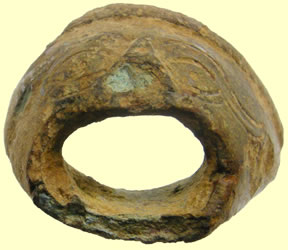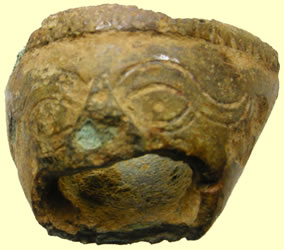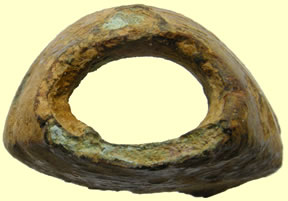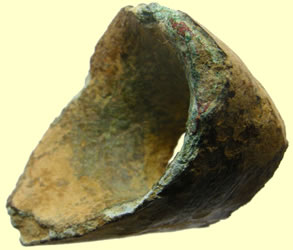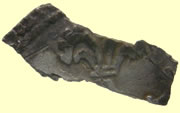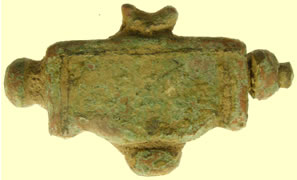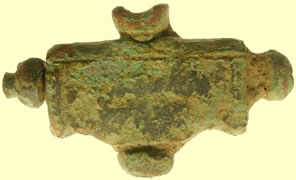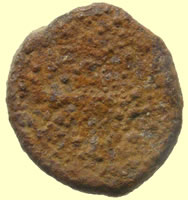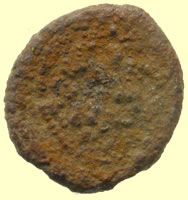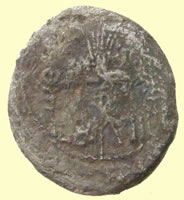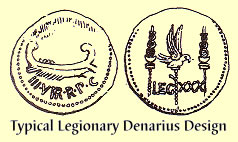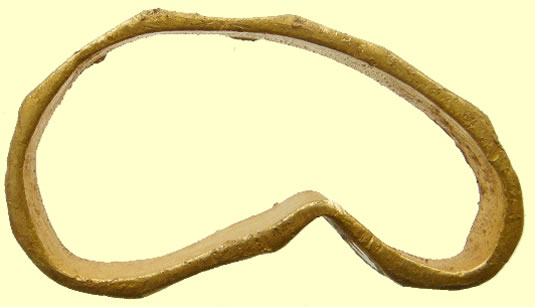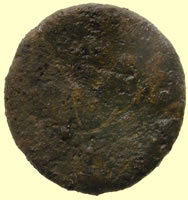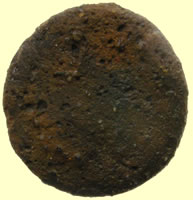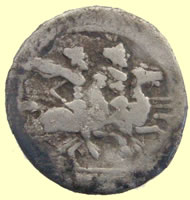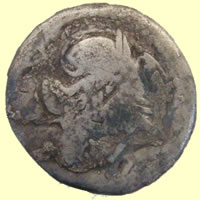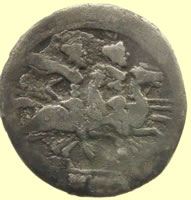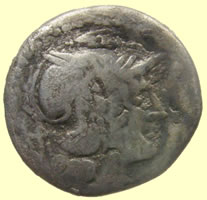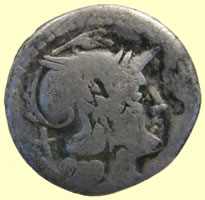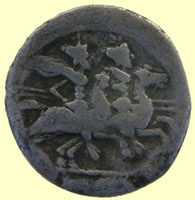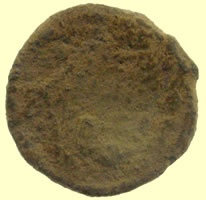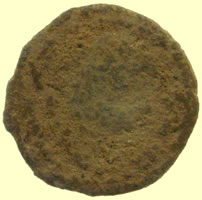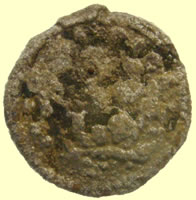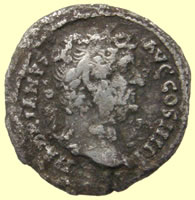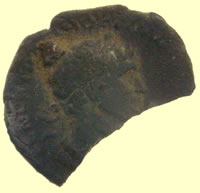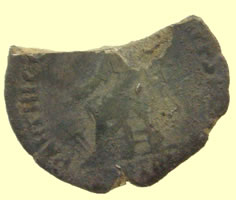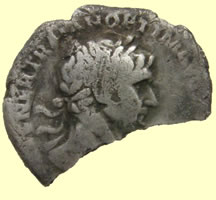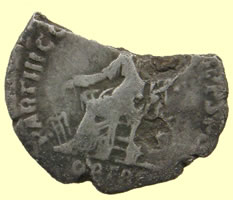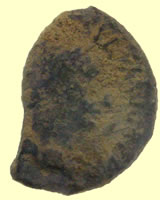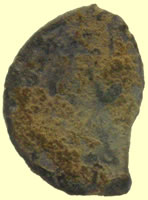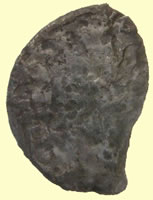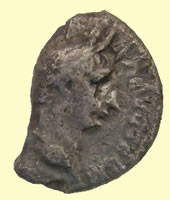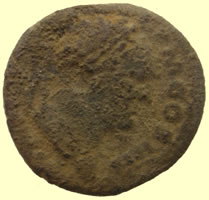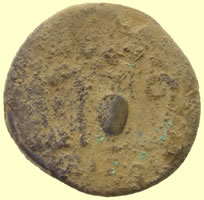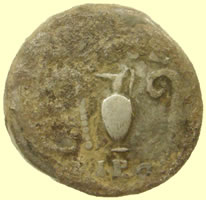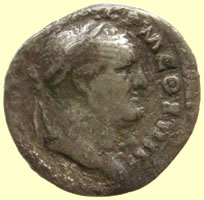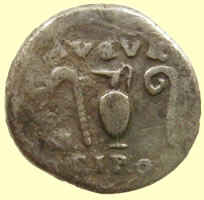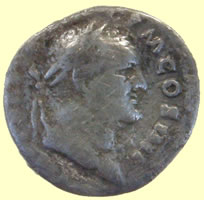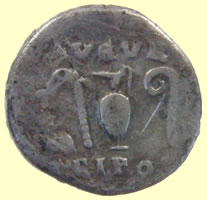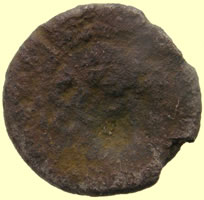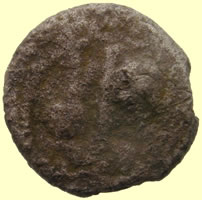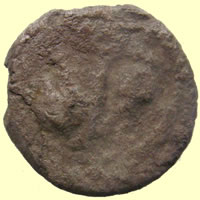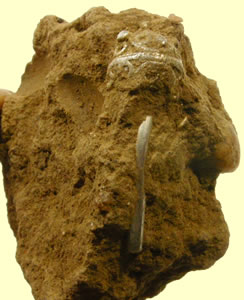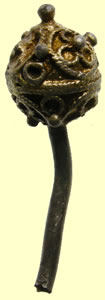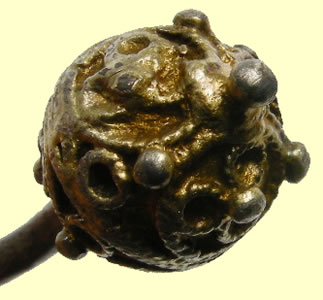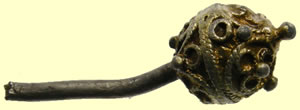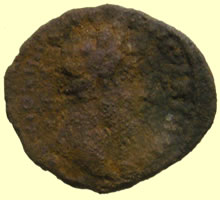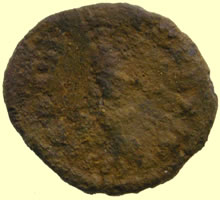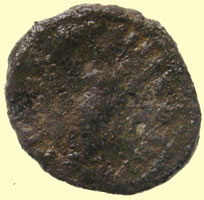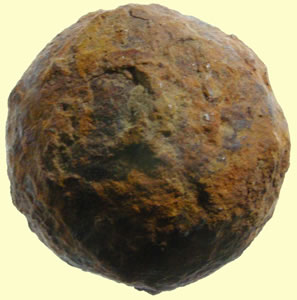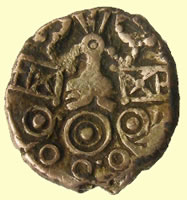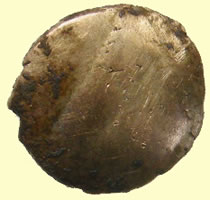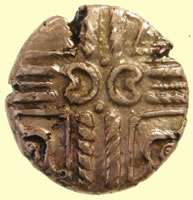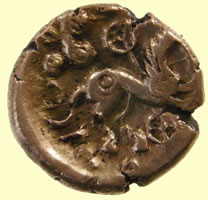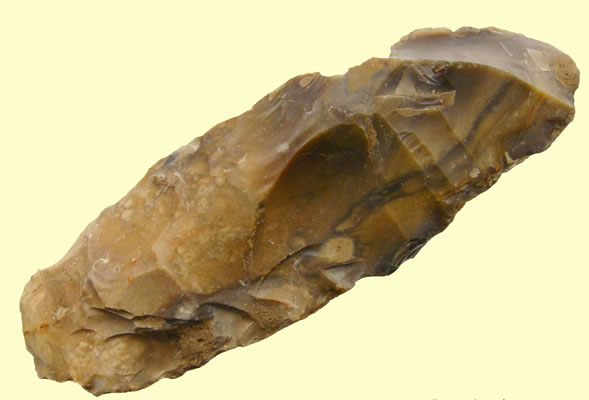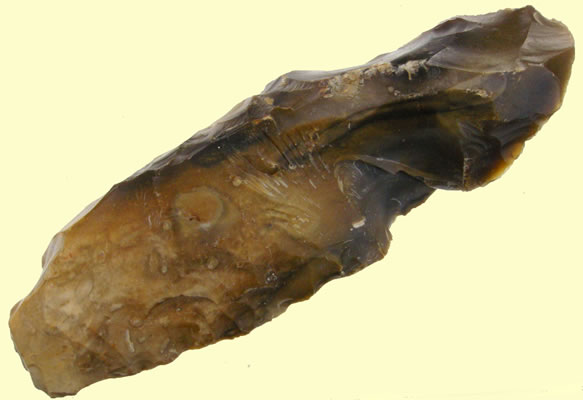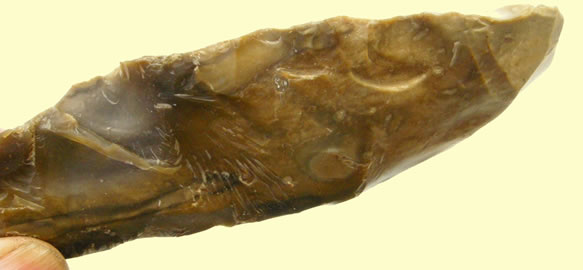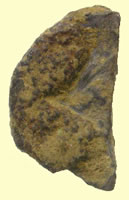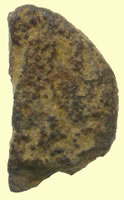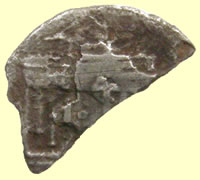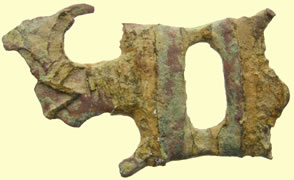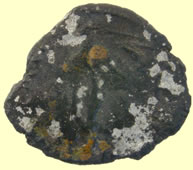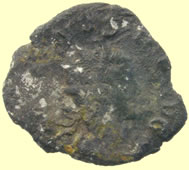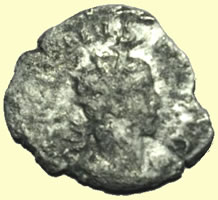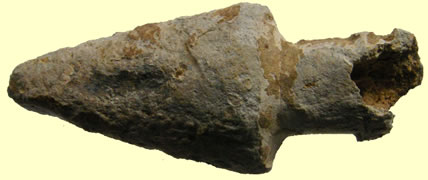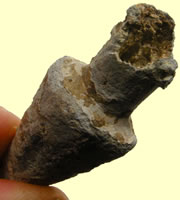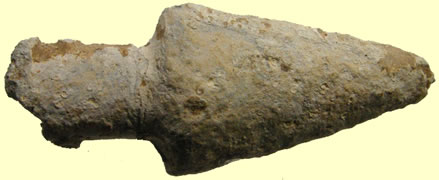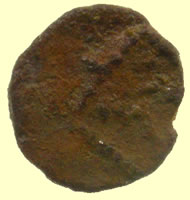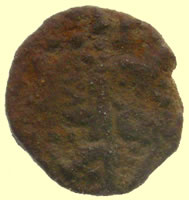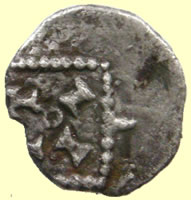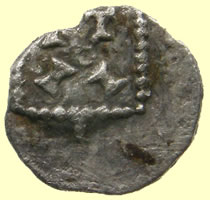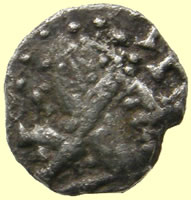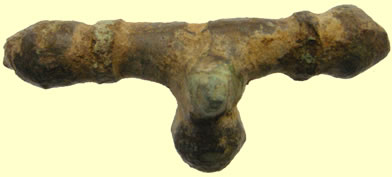

Metal detecting holidays in England with the World's most successful metal detecting club.
Twinned with Midwest Historical Research Society USA
2011 Nov finds page
|
|||
|
|||
C 1stC AD Celtic drinking vessel spout - face decoration 34.94mm W x 20.63mm L - 27.20g |
|||
|
|||
| 1640's Civil war lead bullet melting bowl ? | |||
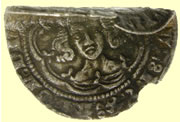 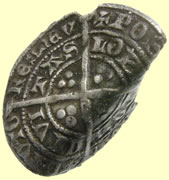 |
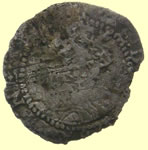 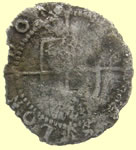 |
||
June 1361-1369 Edward III hammered silver half groat - Treaty B - double annulet and satire stops, Treaty X Obv EDWARDVS REX ANGL DNS HYB Rev CIVI/TAS/LON/DON 21.97mm, 2.24g |
16thC Elizabeth 1st hammered silver penny | ||
  |
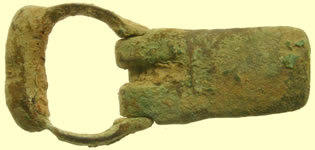 |
||
| 1604 James 1st hammered silver penny | Medieval buckle with integral plate | ||
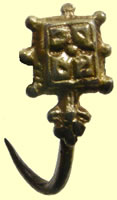 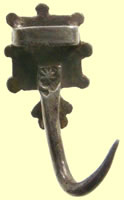 |
|||
| Stunning 16thC Tudor clothing fastener - gold on silver reported to museum as treasure | |||
 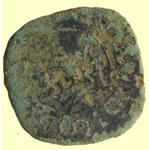 |
 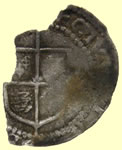 |
||
| 1634 Charles 1st hammered copper rose farthing | 16thC Elizabeth 1st hammered silver penny | ||
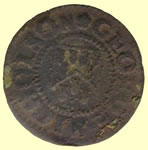 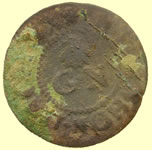 |
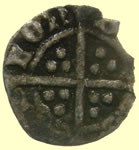 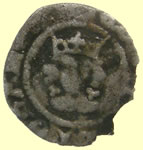 |
||
| 17thC George Nicolson, grocers of Thorpe Le Soken Essex hammered copper trade farthing | 1464 -70 Edward IV hammered silver halfpenny - Trefoils by neck Rev CIVI/TAS/LON/DON - London mint |
||
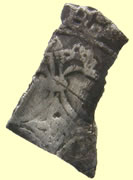 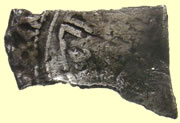 |
|
||
| 1475 Dutch -Karel de Stoute -silver DOUBLE STUIVER | 1475 Dutch -Karel de Stoute -silver DOUBLE STUIVER | ||
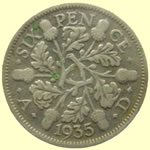 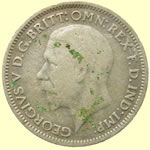 |
|
||
| 1935 George V milled silver sixpence | Medieval purse bar | ||
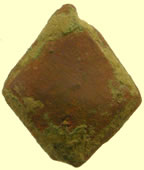 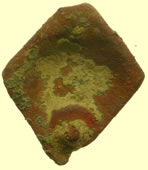 |
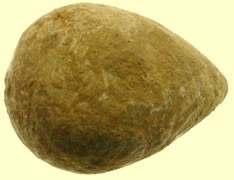 |
||
A Post Medieval cast copper alloy lozenge shaped mount ChronologyBroad period: POST MEDIEVAL Date from: Circa AD 1500 |
Roman lead ballista shot | ||
 |
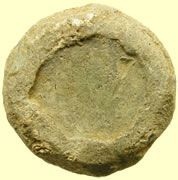 |
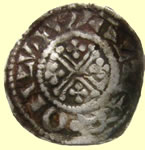 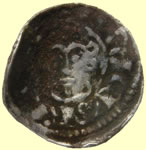 |
|
| Medieval lead gaming piece | Roman lead trade weight | 1204 King John hammered silver penny - Class 5a2 Obv WALTER.ON.LVD - Moneyer Walter of London |
|
BC Republican Roman silver straight into the 'cooker' to remove crust
32 BC Mark Antony, Legionary silver Denarius. ANT.AVG.III.VIR.R.P.C Galley, Legionary Eagle between two standards
Amazing detail under the crud, I think I recognise this coin as a Mark Antony Galley coin - sent to Mark Lehman for ID - more cooking to do yet
That's right, although I wouldn't call this a "tribute" type, this is a denarius struck by Marc Antony to pay the troops and for supplies during the campaign which ended in the defeat of his forces by those of Octavian (later Augustus) and Agrippa at the great sea-battle of Actium in 31 BC. These pieces, which enumerate his various legions on the reverse, are presumed to have been struck by a travelling mint accompanying his forces during the winter of 32/31 BC at his headquaters in Patrae. Some of the legions named on the coins are found only occasionally or rarely if at all. This one appears (as well as I can make out from the photo) to name legion II (2) - you can look at the area between the "aquila" - the legionary eagle and the standard to the right on the reverse to confirm which legion is named with a Roman numeral. If it is II, it's one of the more commonly found legions in this series. The legend on the obverse, along with the galley, is ANT AVG III VIR R P C, which names Antony as Augur and Triumvir. Due to being somewhat debased silver, these remained in circulation in some areas for 250-300 years and are often found in northern European hoards worn so smooth that all you can do is identify them as legionary denarii - this piece is in far nicer condition than these are generally found - it must have been lost relatively soon after it was minted. Mark |
|||
 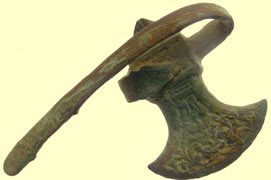 |
|||
| Georgian axe mount | |||
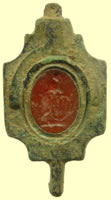 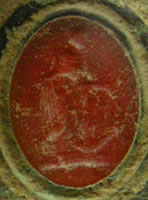 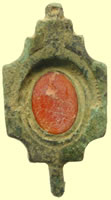 |
|||
| Georgian Naval fob seal - Man standing leaning left resting on anchor | |||
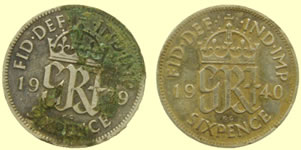 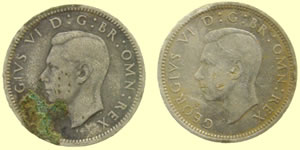 |
|||
| 1940's George VI milled silver sixpences | |||
  |
 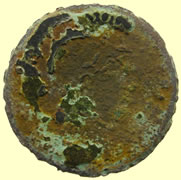 |
||
| 1927 George V milled silver sixpences | 18thC Condor token | ||
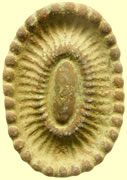 |
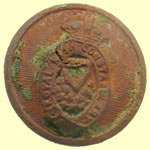 |
  |
|
| Georgian mount | Royal Irish Constabulary | 1820 George III milled silver sixpence | |
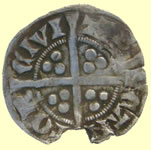 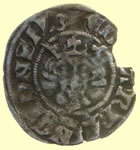 |
 |
||
1344 Edward III hammered silver penny - Florin type Obv EDWAR R ANGL DNS YB Rev CIVI/TAS/CAN/TOR- Canterbury mint |
Medieval buckle plate | ||
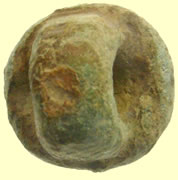 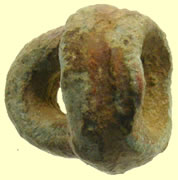 |
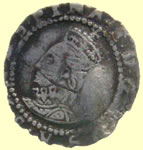 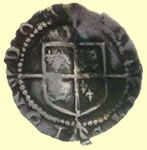 |
||
| Roman handle mount | 1560-1 Elizabeth 1st hammered silver penny | ||
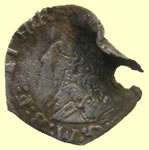 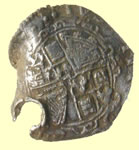 |
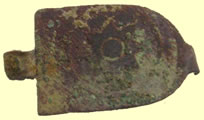 |
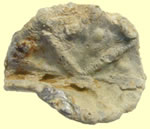 |
|
| 1634 Charles 1st hammered silver penny | 18thC clog fastener | 15thC lead token | |
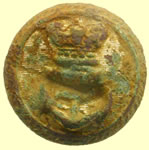 |
 |
 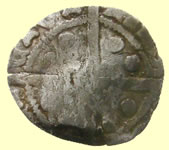 |
|
Royal Navy - Officers (Roped Rim) Lined Background 17.5mm - 1843-1891 |
15thC casket key | 1464-70 Edward IV hammered silver penny - Quatrefoils by neck | |
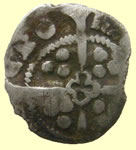 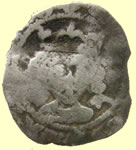 |
|||
1464 Edward IV hammered silver penny - quatrefoil in reverse cross - Quatrefoils by neck Rev CIVI/TAS/EBO/RACI - York mint |
|||
|
|||
Monster find - C12thC Early medieval gold ring - reported as treasure to museum Interesting hand punched lettering which has a barred A with additional top bar like on short cross coins of Class7 and an unbarred A also on the ring. "DEBAL GUD GUDANI +" which is Gothic, meaning "God of Gods"
4.22g, 4.49mm H x 22.59mm W |
|||
As dug, nearly 'cooked' and final pictures - just sent to Mark for his final ID 17.81mm, 3.28g Equals the oldest coin found in Britain at 211 BC
|
|||
Early Roman silver coin - straight into 'cooker' to clean off horn silver crust This dates, as far as I can tell - since no trace of symbol has become visible beneath the horses or between the heads of the Dioscuri - to the earliest issue of actual Denarii, as distinct from the earlier Drachma-denominated silver coinage. It dates to the period 211-206 BC (according to the most recent scholarship on dating) and would be RSC # 2 (Roman Silver Coinage) - if that catalog number gives you some idea of how close to the beginning of the book it's found. This first coinage was anonymous, lacking even symbols to potentially indicate via association (or pun) the names of the families of moneyers. This is actually the 3rd type produced (so far as I can tell) "ROMA" in the exergue of this specimen appears to be in relief. On the very earliest ROMA was incuse, and a transitional type had ROMA partially incuse and partially in relief. The general types, however, the helmeted head of Roma, inspired by (and, frankly, copied from) the helmeted head of Athena on Corinthian didrachms) with "X" mark of denomination (10 Asses of bronze to the silver Denarius - later it would be re-tariffed at 16) and the Dioscuri, Castor & Pollux, galloping right with levelled lances would be among the very most common devices used on denarii over the next 150 years. When there was no specific bit of history or family fame being related on a moneyer's denarii, this was one of the 3 main "stock" types, along with Jupiter driving a quadriga and Victory driving a biga. I believe this is the earliest Roman coin you folks have turned up, to date. It is, at least, the earliest I recall being forwarded to me for identification. With the exception of the slightly earlier (and very much more rare) "Romano-Campanian" Quadrigati (Didrachmae), Drachmae and Semes, this is about as early as you can go in the "Roman" coin series. Mark |
|||
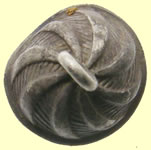 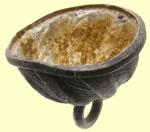 |
 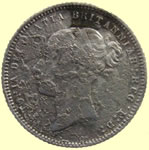 |
||
| Not sure if this is a medieval silver hawking bell fragment so I reported it to Colchester museum as potential treasure | 1871 Victoria milled silver sixpence | ||
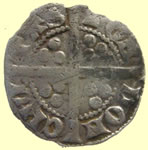 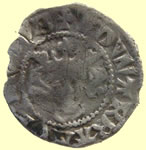 |
 |
 |
|
1344 Edward III hammered silver penny - Florin type Obv EDWAR R ANGL DNS YB Rev CIVI/TAS/LON/DON- London mint |
19thC Army button | 1887 Registered design - Victorian gilded ink well cover ? | |
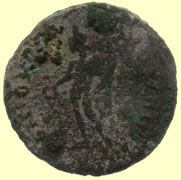 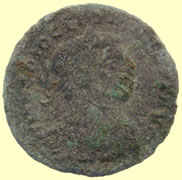 |
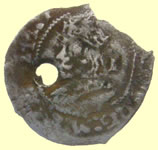 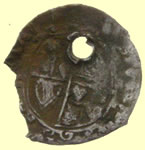 |
||
3rdC Roman bronze sent off for ID Unless you can make out some letters in the exergue - the area below the "ground line" on the reverse - I won't be able to tell you much more than I have already about this piece. In general, Diocletian is a very important ruler in terms of the coinage as well as being a political innovator - he thought up the tetrarchy system, breaking the Empire down into manageable chunks shared-out between 4 or more Imperials. He completely re-vamped and reformed the Roman economic system during the 280's & 290's. One of his major changes in the coinage was the introduction of the follis - a large (the earliest ones can be upwards of 35mm) billon coin with silvering. This was then the main circulating denomination for the next 50+ years or so, although it underwent an inexorable process of debasement and diminution of size so that the final pieces of this general denomination will be in the vicinity of 15mm and 1.5 - 2.0 gms. If we can read the exergual mint mark (or, in one case, show that there is none) we can then place it to both a mint and a time-range - usually of no more than a year or two. Without the exergual mintmark, just on the basis of size and type, it's likely to be around 300 AD, give or take a few years. Diocletian abdicated in 305 and became one of the few Roman emperors to die in his own bed at home. Mark |
1634 Charles 1st hammered silver penny | ||
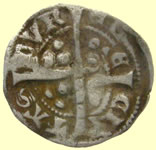 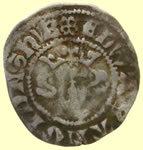 |
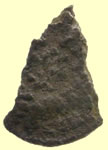 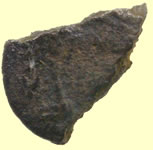 |
||
1279 Edward 1st hammered silver penny - Cross Moline - Class 9a Obv EDWAR ANGL DNS YB Rev CIVI/TAS/DVR/ENE- Durham mint |
Roman silver coin fragment | ||
  |
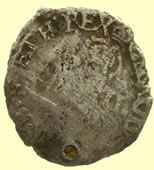 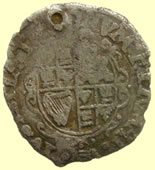 |
||
| 1215 Henry III hammered silver short cross half penny | 1635-6 Charles 1st hammered silver half groat - crown mintmark | ||
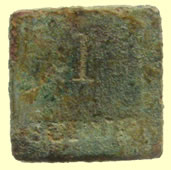 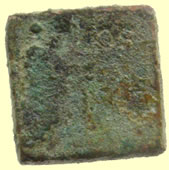 |
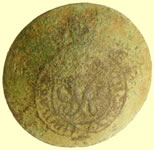 |
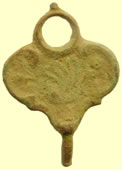 |
|
18thC 1 Scruple apothecary weight A unit of apothecary weight equal to about 1.3 grams, or 20 grains |
Georgian Royal engineers button | Georgian watch winder | |
 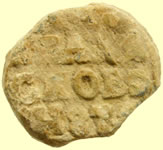 |
  |
||
| 1815 Russian lead bale seal | Medieval gilded decorated strap end fragment | ||
As dug
Teresa's Roman silver starting to 'cook' up nicely - sent to Mark Lehman for ID
This is a denarius of Hadrian (117-138 AD) who did some building in your part of the world as a part of his program to consolidate the governable parts of the expanded Empire left him by his predecessor Trajan. Trajan, if you will recall, was the emperor under whose reign the Roman Empire reached its largest size, so Hadrian, being a practical sort of fellow, trimmed-off the ungovernable places (Like the lands won from the Parthian Persian Empire) and did what he could to make other areas as practical to be goverened as possible. In Britain, as you know, this meant building and maintaining a string of fortresses and garrisons, all connected by a wall across the narrowest part of your island to keep the increasingly Romanized south from overmuch depredation from the "barbarian" north. This piece shows a personification of Africa - the Romans were big on putting human faces onto abstract concepts as a part of their well-developed system of personifications - as a woman reclining at ease against a rock, wearing an elephant-skin headdress and holding a scorpion and a cornucopia, a basket of corn-ears and fruit at her feet. Africa represented a nearly never-ending source of exploitable riches for the Romans, the fertile areas of the north provided a major portion of the grain without which the Empire would not have had the bread for its "Bread and Circuses". And indeed Africa produced an unending supply of exotic beasts and people to populate the circuses as well. The personification of Africa appeared on Roman coins of all denominations towards the end of Hadrian's relatively long reign - your piece dates to about 136 AD. RIC II 299, RSC 138. Mark |
|||
'Cooked' |
|
||
Great detail on this broken Roman silver - sent for ID The one with the concave break is a Trajan (96-117 AD) Fortuna Redux Denarius - Fortuna seated left holding a rudder (visible at her feet) and cornucopiae. The reverse legend refers to Trajan's victorious campaigns against the Parthians. The land acquired in these victories was the first that Hadrian "got rid of" - gave back to the Parthian Empire in the interests of peace - in his reign which succeeded Trajan's - but it was part of what brought the Roman Empire to its largest size in lands held. This occurred under Trajan, at just about the time this type was struck - the later part of Trajan's reign - around 116 AD, give or take a year. I'm not sure yet about who's on the one with the convex break. The portrait makes me think it's probably Flavian era (Vespasian, Titus & Domitian, end of the 1st century AD) I'll need to try to tweak the images a bit to get a better idea from these photos, but a "post-cooking" photo would probably give me more clues. Mark
|
|||
 |
|||
| Celtic pure gold wrist Torc fragment - 1.63g, 30.18mm L x 2,5 mm dia | |||
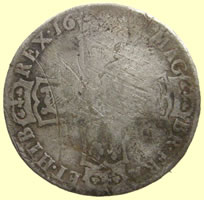  |
|||
| Monster sized 1696 William III milled silver half crown (30 pence) | |||
As dug
Cooking
Almost 'cooked - just re sent it back off to Mark for a further ID
|
|||
2ndC Roman silver coin - 'cooking' it to remove crust This is probably a Flavian (Vespasian, Titus or Domitian) but it is a similar reverse with sacrificial implementia. This one has "TRI POT" (Tribunicia Potestatum or the Tribunician Powers) across the bottom of the reverse, and that's a common reverse type for the Flavians. Other emperors used the sacrificial implements as a reverse type. So I can't be certain who it is until there's a bit more obverse detail to go on. I can tell you that they're often associated with issues for the Caesar - the "heir apparent" - (if there is one) so I'd make a guess there's a good chance this may be Titus, but I believe Vespasian used this same reverse. When you've revealed some obverse details I should be able to tell you better what you've got here. Mark I'm not certain which (if any) member of the family or reference number I might have quoted you before, but as far as I can tell this is Vespasian - the missing part of the obverse legend would be" [IMP CAES VESP AV]G P M COS IIII. Mark
|
|||
  |
 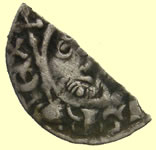 |
||
1247 Henry III hammered silver voided short cross half penny Moneyer Willem of Bury St Edwmunds mint |
1180 Henry II hammered silver short cross half penny - Class 1b Obv HENRICVS REX Rev WILL **** RW Moneyer Willelm of York mint |
||
 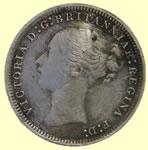 |
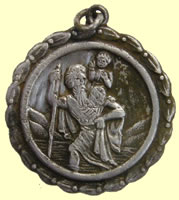 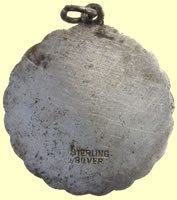 |
||
| 1873 Victoria milled silver three pence | Sterling silver St Christopher medallion | ||
 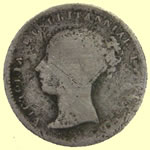 |
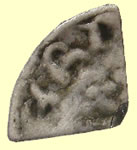 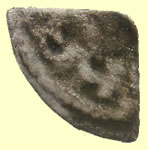 |
||
| 1842 Victoria milled silver four pence |
1180 Henry II hammered silver short cross qtr penny Moneyer Gilberd of Exeter mint
|
||
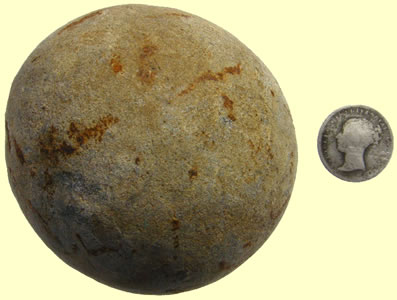 |
|||
Superb eye ball find -C16thC Henry VIII stone round shot cannon shell - out of use by the 17thC
|
|||
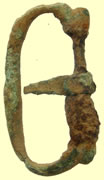 |
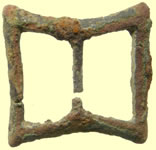 |
 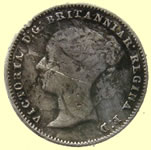 |
|
| Medieval D buckle | 1550-1650 buckle | 1854 Victoria milled silver three pence | |
 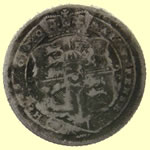 |
  |
||
| 1816 George III milled silver sixpence | 2ndC Roman fibular brooch with red enamelling and gold cross decoration remaining | ||
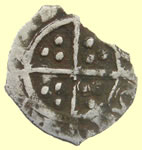 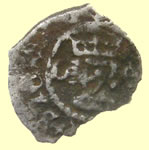 |
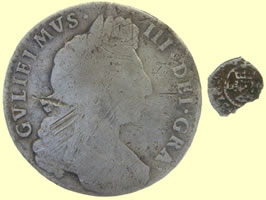 |
||
1485 Henry VII hammered silver halfpenny Single arched crown - Key to left of bust Rev CIVI/TAS/EBO/RACI - York mint |
Little and large of silvers found | ||
|
|||
| Crusty Roman 'cooking' to remove crud | |||
Miss Jeff left it in the clod so I could soak it slowly to keep the pin intact - never found one with the pin still in place
|
|||
| Stunning 16thC Tudor gilded silver ornate pin - reported as treasure to the museum | |||
|
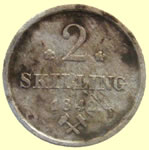 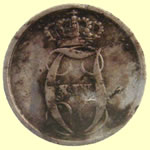 |
||
| Another crispy Roman silver straight into the 'cooker' | 1842 Continental 2 skilling silver coin | ||
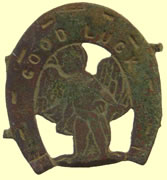 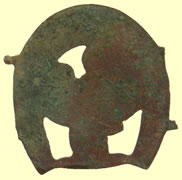 |
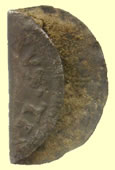 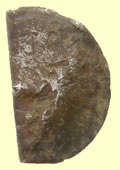 |
||
| 20thC good luck badge | Hammered silver coin - needs straightening to ID properly | ||
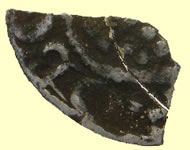 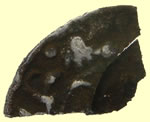 |
 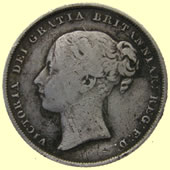 |
||
| 1215 Henry III hammered silver qtr penny | 1858 Victoria milled silver shilling (12 pence) | ||
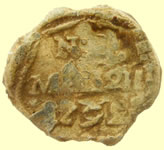 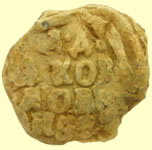 |
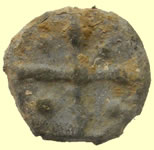 |
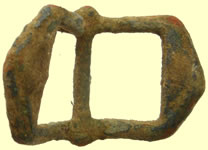 |
|
| 1795 Russian lead bale seal | 15thC lead token - type 2 | 1550-1700 buckle | |
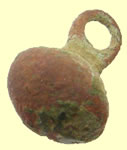 |
 |
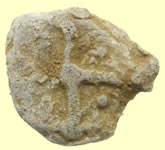 |
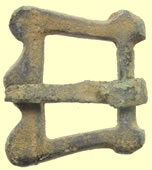 |
| 16thC Tudor buttons | Neat mongrammed19thC plated silver knife handle | 15thC lead token - type 2 | 1550-1650 buckle |
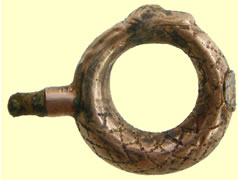 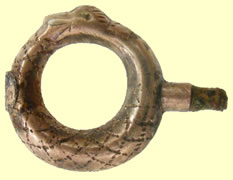 |
|||
| Really neat gold Georgian watch winder - snake biting its own tail | |||
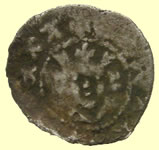 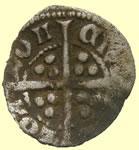 |
 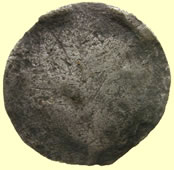 |
||
1300 Edward 1st hammered silver farthing - New issue with inner circles both sides - Type 28d Obv +EDWARDVS REX A Rev CIVI/TAS/LON/DON |
Interesting worn hammered silver coin with Apothecary weight emblem | ||
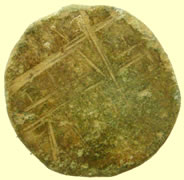 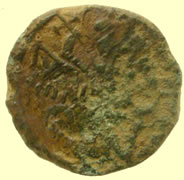 |
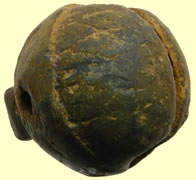 |
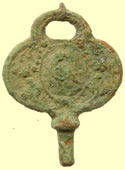 |
|
| 18thC decorated crotal bell | Georgian watch winder | ||
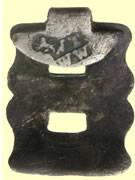 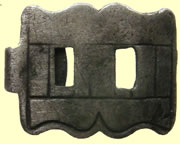 |
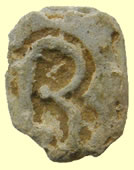 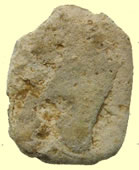 |
||
| 18thC silver clog fastener - Maker WT WW | 17thC apothecary weight | ||
|
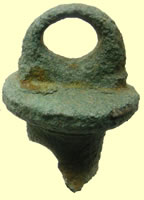 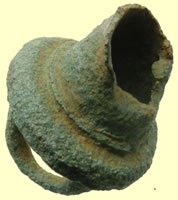 |
||
| Medieval bar mount - some gilding remains | Interesting early item like a protected loop terret - offset wear means it is some type of strap guide | ||
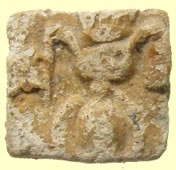 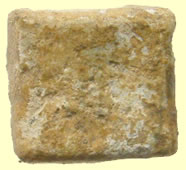 |
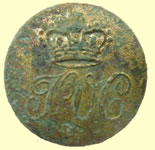 |
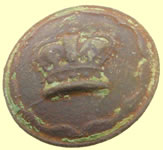 |
|
| C10thC Saxon lead coin weight | TVC ? | WW1 Bavarian Army button | |
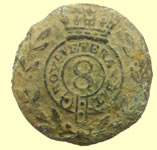 |
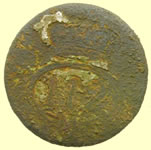 |
 |
|
| 8th Royal Veterinary battion button | 112th Regiment of foot button (King's Royal Musqueteers) 1761-1763
|
Roman hooked mount | |
  |
 |
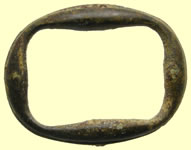 |
|
| 1500-1700 mount | Great eyeball find clay marble | Georgian buckle | |
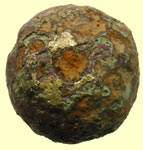 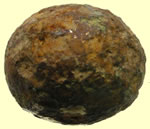 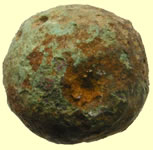 |
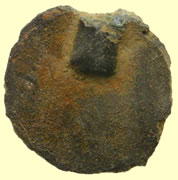 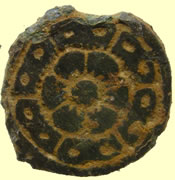 |
||
| Medieval gilded bead | 16thC Tudor clothing fastener | ||
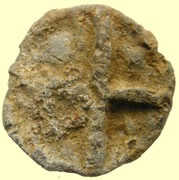 |
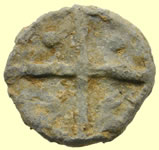 |
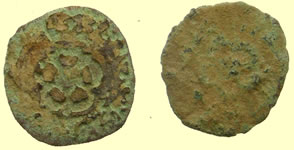 |
|
| Medieval lead trade weight | 15thC lead token type 2 | 1634 Charles 1st hammered copper rose farthing | |
 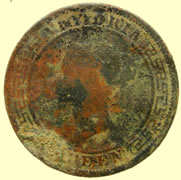 |
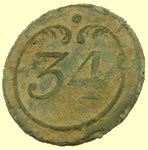 |
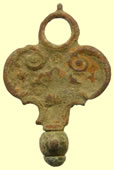 |
|
| 1870 Ceylon Victoria 1 cent | 34th French regiment of the line - Napoleonic period | Georgian watch winder | |
 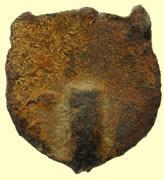 |
|||
16thC Tudor religious clothing fastener - IHS
IHS: dating from the 8th c., this is an abbreviation for "IHESUS," the way Christ's Name was spelled in the Middle Ages (despite popular belief, the monogram stands neither for "Iesus Hominum Salvator" --"Jesus Saviour of Men" -- nor for "In His Service.") Popularized by St. Bernardine of Siena, the monogram was later used by St. Ignatius of Loyola as a symbol for the Jesuit Order. The IHS monogram is an abbreviation or shortening of Jesus' name in Greek to the first three letters. Thus ΙΗΣΟΥΣ, ιησυς (iēsus, "Jesus"), is shortened to ΙΗΣ (iota-eta-sigma), sometimes transliterated into Latin or English characters as IHS or ΙΗC. The symbol is said to appear rarely in the catacombs, only in the catacomb of Priscilla and the atrium of the Capella Gr�ca (Greek Chapel).1 It was popularized in the fifteenth century, however, by Franciscan disciple Bernadine of Sienna as a symbol of peace. In 1541 St. Ignatius Loyola adopted the symbol with three nails below and surrounded by the sun as the seal of the Jesuit order. Contrary to some authors, the monogram originally stood for neither for Iesus Hominum Salvator ("Jesus Savior of Men") nor for "In His Service." Some attribute its origin to Constantine's vision, where he saw a cross with the inscription "In hoc signo vinces" ("in this sign you shall conquer,"2 which is abbreviated, according to them, as IHS. However, this seems to require a stretch, as do claims that it is really a pagan symbol. The simplest explanation, as an abbreviation of Jesus' name, is best.
|
|||
  |
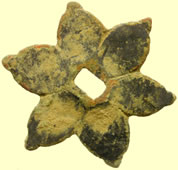 |
||
| 18thC spur fitting | 17thC knife quillion | ||
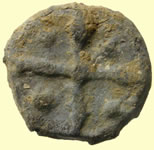 |
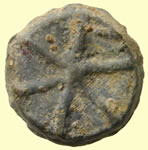 |
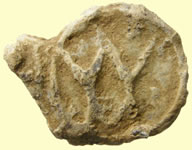 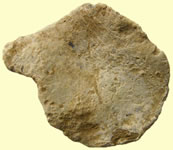 |
|
| 15thC lead token | 15thC lead token | 17thC lead token | |
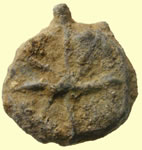 |
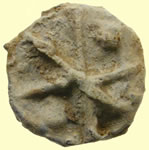 |
 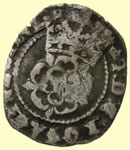 |
|
| 15thC lead token | 15thC lead token | 1604 James 1st hammered silver half groat | |
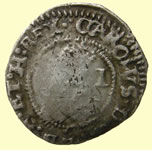 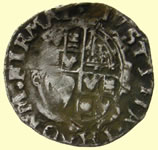 |
 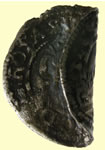 |
||
| 1634 Charles 1st hammered silver penny - double stuck C in CAROLVS | 1604 James 1st hammered silver half groat | ||
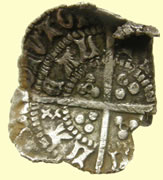 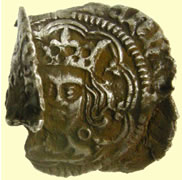 |
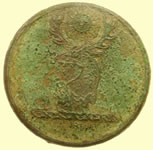 |
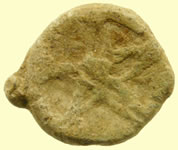 |
|
1422 Henry VI hammered silver groat - annulets by neck Rev VIL/LA/CAL/IS - Calais mint
|
19thC livery button | 15thC lead token | |
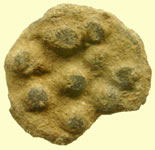 |
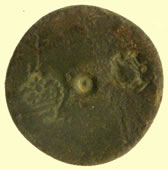 |
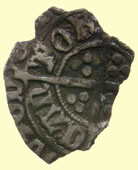 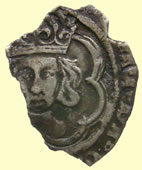 |
|
| Early medieval lead token | 1634 Charles 1st coin weight - crown C cipher | 1485 Henry VII hammered silver half groat - Two arches unjewelled Rev CIVI/TAS/CAN/TOR - Canterbury mint |
|
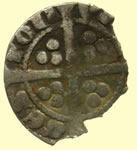  |
 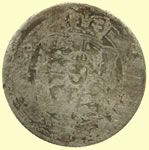 |
||
1279 Edward 1st hammered silver penny- Class 9b Obv EDWR ANGL DNS HYB Rev VIL/KYNCES/TON - Kingston upon Hull mint First coin of that mint we have ever found |
1819 George III milled silver sixpence | ||
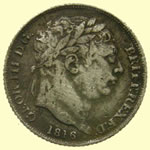 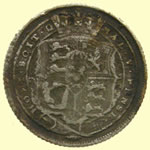 |
 |
||
| 1816 George III milled silver sixpence | 18thC toy cannon | ||
Excellent find - Cannon ball 15oz ( approx 1 pound, 1.9 inches dia) - Used from 1642 -45
|
|||
 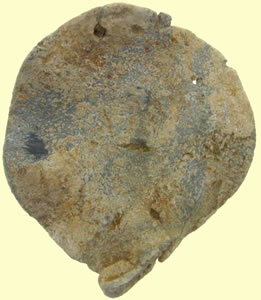 |
|||
Huge Medieval Heraldic crest lead mount - needs researching to find family name 100mm dia |
|||
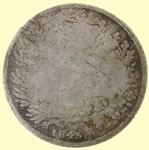 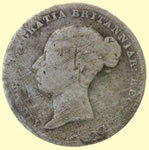 |
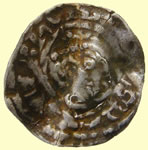 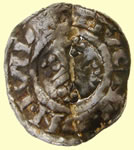 |
||
| 1845 Victoria milled silver sixpence | 1189 Henry II hammered silver short cross penny - class2 Obv HENRICVS REX Rev ESTIVENE ON.LDND - Monyer Stivene of London mint |
||
 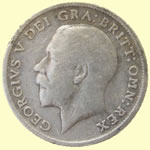 |
 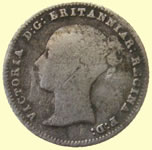 |
||
| 1914 George V milled silver sixpence | 1843 Victoria milled silver four pence | ||
 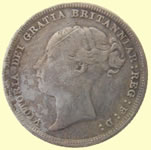 |
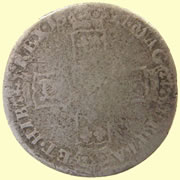 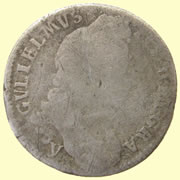 |
||
| 1886 Victoria milled silver sixpence | 1696 William III milled silver shilling (12 pence) | ||
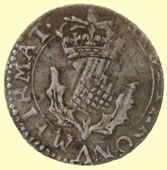 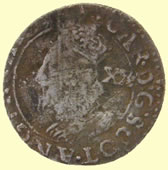 |
 |
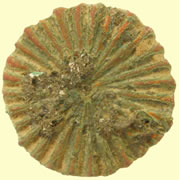 |
|
| 1634 Charles 1st hammered silver twenty pence - XX | Post revolution Republic of France Army button | Georgian pastry jigger | |
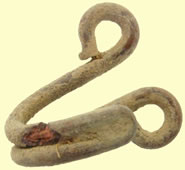 |
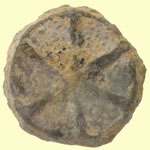 |
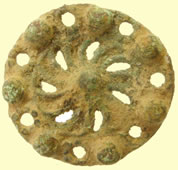 |
 |
| 17thC clothing fastener | 15thC lead token | 16thC mount | Georgian watch winder - Turner and Bonner watch makers Colchester |
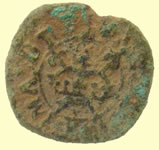  |
 |
||
| 1634 Charles 1st hammered copper rose farthing | Victorian silver shell shaped mount | ||
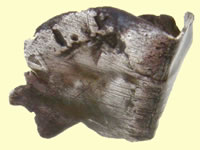 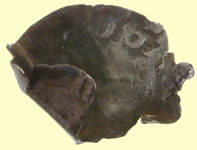 |
|||
| 1554 Mary hammered silver groat | |||
9 carat gold - .25 carat diamond ring - 1.51g Continental and English hall marks - HG Ltd |
|||
50 BC Canti - 1/4 Celtic gold coin -2.06g, 10.43mm - Uninscribed 'P' gold -'Trophy' type VA147 Cantiaci / Cantii This Celtic tribe occupied the south-eastern corner of Britain, probably from the second century BC. Its territory traditionally comprised Kent, eastern Surrey, East Sussex and London south of the Thames. The Cantiaci, or Cantii, were bordered across the Thames by the Catuvellauni and the Trinovantes, although the former may only have expanded to the Thames between 54-30 BC. It is unclear who controlled the north bank of the Thames before that - perhaps a minor tribe that was later absorbed by the Catuvellauni. To the west were the various peoples that made up the Atrebates, including the Regninses. Like many of their neighbours in the south-east, the Cantii were Belgic people from the North Sea or Baltics, part of the third wave of Celtic settlers in Britain. They formed a recognisable territory which may not have been a single unified kingdom until the start of the first century AD, but which instead appears to have been several smaller kingdoms which operated as a confederation in times of trouble. The four individuals who flourished around 55 BC may have been rulers of each of the Cantii kingdoms, perhaps operating together under the authority of Cassivellaunus of the Catuvellauni. Certainly Julius Caesar recorded the Cantii as having four leaders who were kings in their own right. The Cantii at this time were strongly influenced by their Belgic neighbours, the Atrebates, who were more recent arrivals in the country. Their customs were also much the same as the Celts of Gaul, and they were wont to die their skins with blue woad which made them look more terrifying in battle. This custom died out south of the Antonine Wall following the Roman Conquest. That conquest may have caused some of the Cantii to flee northwards where a tribe called the Decantae was noted, just once, by the Romans in Pictland around AD 140.
|
|||
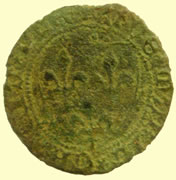 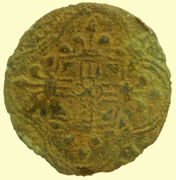 |
 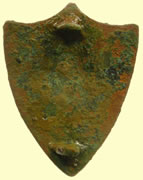 |
||
French copper- alloy Jeton 15th Obv Shield of France bearing three fleur de lys |
1500-1700 shield mount | ||
 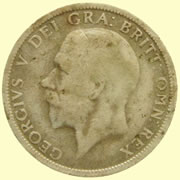 |
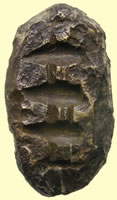 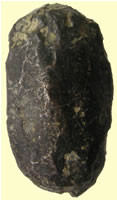 |
||
| 1928 George V milled silver florin (24 pence) | Very interesting Iron age bead with crude decoration on the front - this also has a gold content - perhaps made from a low grade nugget | ||
 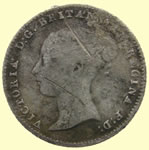 |
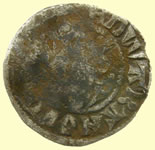 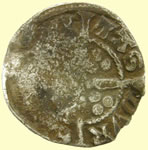 |
||
| 1848 Victoria milled silver 4 pence | 1341 Edward III hammered silver penny - Florin type Obv EDWAR ANGLE DNS HYB Rev CIVI/TAS/DVR/E *** - Durham mint |
||
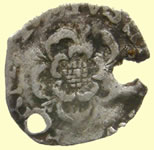 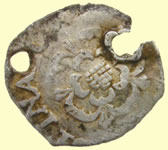 |
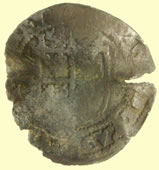 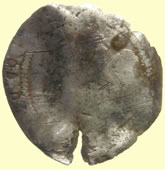 |
||
1625 - 42 Charles 1st hammered silver penny - tower mint uncrowned - rose each side no bust - inner circles Group A |
1587 Elizabeth 1st hammered silver half groat | ||
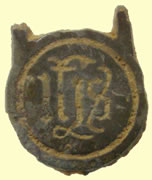 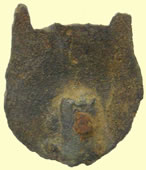 |
|||
16thC Tudor clothing fastener with religious inscription
IHS: dating from the 8th c., this is an abbreviation for "IHESUS," the way Christ's Name was spelled in the Middle Ages (despite popular belief, the monogram stands neither for "Iesus Hominum Salvator" --"Jesus Saviour of Men" -- nor for "In His Service.") Popularized by St. Bernardine of Siena, the monogram was later used by St. Ignatius of Loyola as a symbol for the Jesuit Order. The IHS monogram is an abbreviation or shortening of Jesus' name in Greek to the first three letters. Thus ΙΗΣΟΥΣ, ιησυς (iēsus, "Jesus"), is shortened to ΙΗΣ (iota-eta-sigma), sometimes transliterated into Latin or English characters as IHS or ΙΗC. The symbol is said to appear rarely in the catacombs, only in the catacomb of Priscilla and the atrium of the Capella Gr�ca (Greek Chapel).1 It was popularized in the fifteenth century, however, by Franciscan disciple Bernadine of Sienna as a symbol of peace. In 1541 St. Ignatius Loyola adopted the symbol with three nails below and surrounded by the sun as the seal of the Jesuit order. Contrary to some authors, the monogram originally stood for neither for Iesus Hominum Salvator ("Jesus Savior of Men") nor for "In His Service." Some attribute its origin to Constantine's vision, where he saw a cross with the inscription "In hoc signo vinces" ("in this sign you shall conquer,"2 which is abbreviated, according to them, as IHS. However, this seems to require a stretch, as do claims that it is really a pagan symbol. The simplest explanation, as an abbreviation of Jesus' name, is best. |
|||
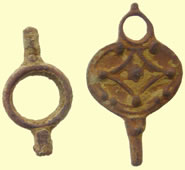 |
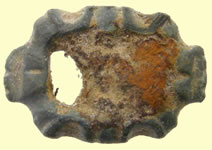 |
||
| Georgian watch winders | 1550-1700 buckle | ||
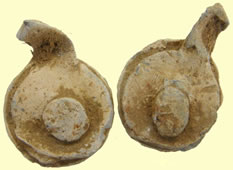 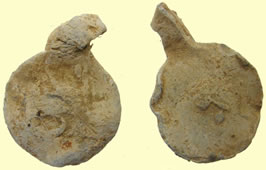 |
 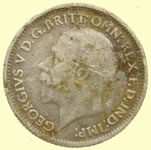 |
||
| Post medeival lead cloth seals | 1929 George V milled silver sixpence | ||
 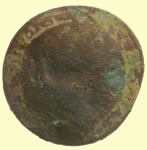 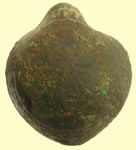 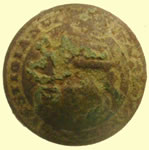 |
|||
| Stunning finds, 5th Dragoons guards buttons - Crimean war period - unrecorded in any ref book | |||
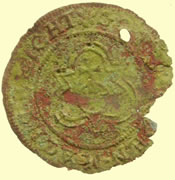 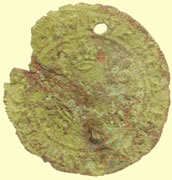 |
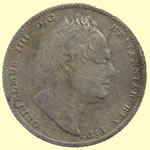 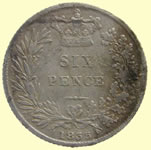 |
||
1586 Hans Krauwincel II Rose orb Jetton HANNS KRAVWINCKEL IN NVRENB |
1835 William IV milled silver sixpence | ||
 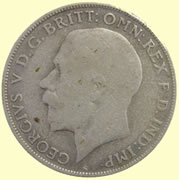 |
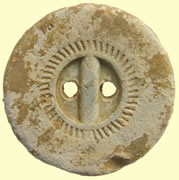 |
||
| 1922 George V milled silver florin (24 pence) | Decorated lead hem weight | ||
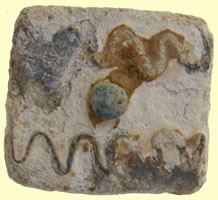 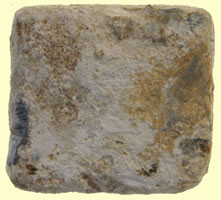 |
|||
| C 9thC Saxon lead trade weight - snake design | |||
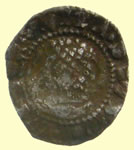 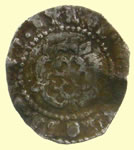 |
 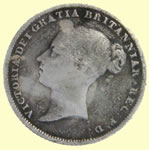 |
||
| 1603 James 1st hammered silver penny | 1856 Victoria milled silver sixpence | ||
 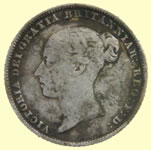 |
 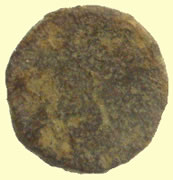 |
||
| 1852 Victoria milled silver sixpence | 1422-61 AD Bronze coin weight - French Ecu - Three lis in shield type |
||
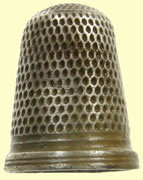 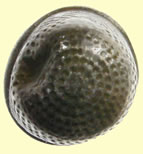 |
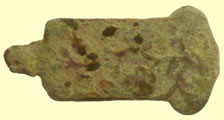 |
||
| Georgian silver thimble | 18thC clog fastener | 17thC clothing fastener | |
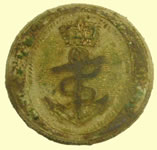 |
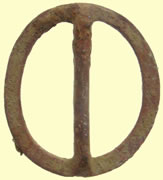 |
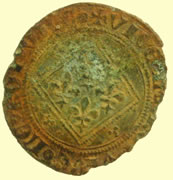 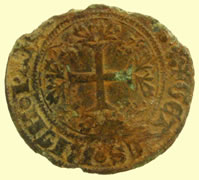 |
|
RN Capt / Commander - 1787 RN Lieutenant - 1787 |
17thC baldric buckle | 1461 Paris type Jetton - 'lozenge containing four lis' VIVE:LE:BON:ROI:DE:FRANCE |
|
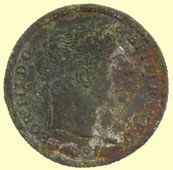 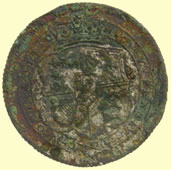 |
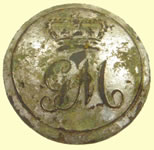 |
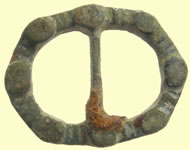 |
|
| 1816 George III milled silver forgery | Crown GM button ? | 1550-1650 buckle | |
 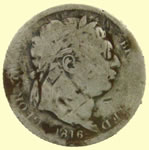 |
 |
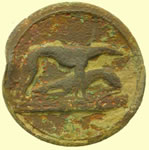 |
|
| 1816 George III milled silver sixpence | 19thC monogrammed button - MC | 19thC hunting button | |
45 BC Addedomaros Celtic gold full stater 5.45g, 17.21mm Obv cross of 3 plain & 2 pellet lines with 2 opposed crescents b in centre Rev horse r ., above pellet in ring, pellet in wheel below |
|||
|
|||
Amazing huge 11,000 Stone Age flint axe head - this is beautifully crafted with a thumb slot for easy holding 155mm L x 48.63mm W |
|||
 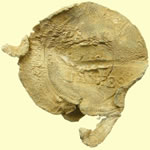 |
 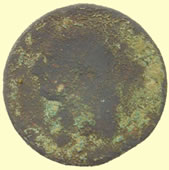 |
||
| Post medieval lead bale seal | 18thC Continental copper coin | ||
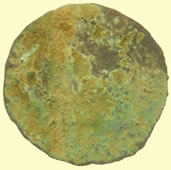  |
 |
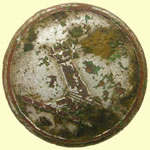 |
|
1586 Hans Krauwincel II Rose orb Jetton HANNS KRAVWINCKEL IN NVRENB |
19thC Royal engineers button | 19thC livery button | |
 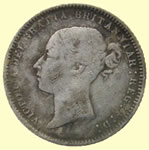 |
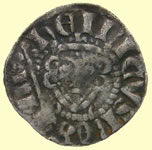 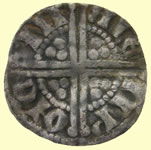 |
||
| 1873 Victoria milled silver sixpence | 1247 Henry III hammered silver voided long cross penny - Class 5b Obv HENRICVS REX III Rev ALE/IN/ONC/ANT - Moneyer Ale/in of Canterbury mint |
||
  |
|
||
| 1816 George V milled silver sixpence | 2ndC Roman silver - 'cooking it to remove crust | ||
 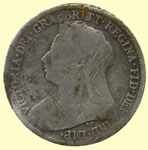 |
 |
||
| 1894 Victoria milled silver sixpence | Superb 17thC jug handle - great eyeball find | ||
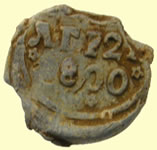 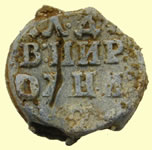 |
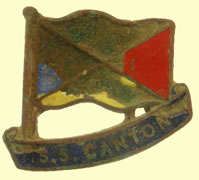 |
||
| 1800 Russian bale seal | S.S. Canton enamelled badge S/S Canton, the last ocean liner to carry P&O's traditional black & stone livery. But within a year of her introduction she was repainted in P&O's new white and buff livery. She was the last passenger ship to join the P&O fleet before the outbreak of the Second World War. |
||
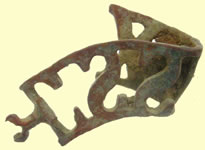 |
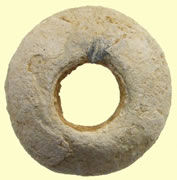 |
  |
|
| WWI - Essex regiment lapel badge | Roman lead spindle whorl | Medieval harness pendant - traces of red enamel remain | |
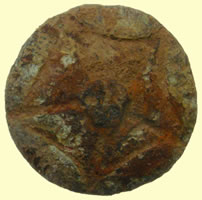 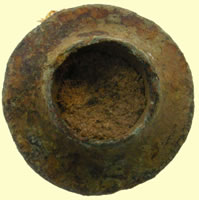 |
|||
| Decorated medieval sword pommel | |||
|
|||
| Roman buckle - traces of gold decoration remain | |||
  |
  |
||
| 1816 George III milled silver shilling forgery | 1341 Edward III hammered silver florin penny Obv EDWAR ANGL DNS HYB Rev CIVI/TAS/CAN/TOR - Canterbury mint |
||
 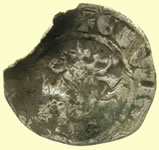 |
  |
||
1327 Edward III hammered silver penny Obv EDWR **** Rev CIVI/TAS/LON/DON - London mint |
1634 Charles 1st hammered silver half penny - rose both sides no legend | ||
  |
 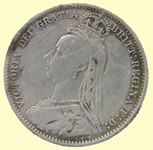 |
||
1247 Henry III hammered silver voided long cross penny - Class 5 Obv HENRICVS REX III Rev ERT/ONC - Moneyer Robert of Canterbury mint |
1890 Victoria milled silver sixpence | ||
|
|||
| Medieval barrel lock | |||
 |
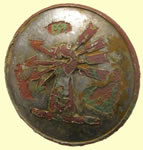 |
 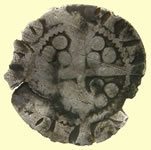 |
|||||||||||
| 1500-1650 buckle | 19thC livery button | 1327 Edward III hammered silver penny Obv EDW **** Rev CIVI/TAS/LON/DON - London mint |
|||||||||||
 |
 |
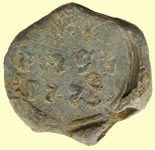 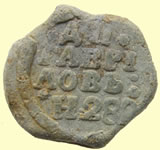 |
|||||||||||
| Medieval lead weight | 15thC lead token | 1775 Russian lead bale seal | |||||||||||
 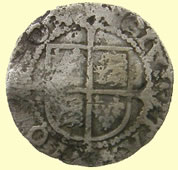 |
 |
||||||||||||
| 1560-1 Elizabeth 1st hammered silver half groat | 18thC clog fastener | 16thC Tudor button | |||||||||||
  |
  |
||||||||||||
| 1500-1700 mount | 1247 Henry III hammered silver voided long cross half penny - Class 2 Obv HENRICVS REX III Rev LIP/ONN/ - Moneyer Phelip of Northampton mint |
||||||||||||
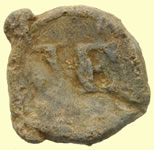 |
 |
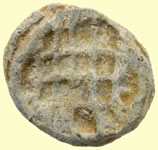 |
 |
||||||||||
| 17thC lead token | Generic merchant Navy button C 1900 | 17thC lead token | 18thC Royal artillery button | ||||||||||
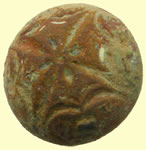 |
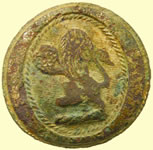 |
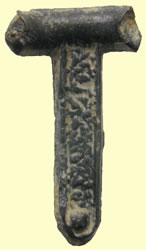 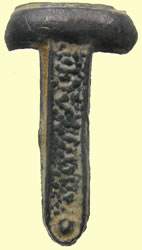 |
|||||||||||
| Georgian button | MN - G & J Burns Ltd In use 1842 - 1922 | Possible treasure as it looks like a T brooch but I am not sure of date- reported to museum | |||||||||||
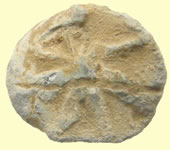 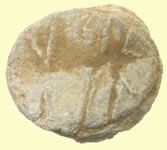 |
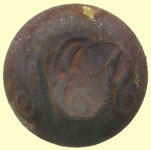 |
||||||||||||
| Medieval lead weight | North Eastern Railways button | ||||||||||||
As dug and then 'cooked'
Final cleaning - Aurelian (270-275) Not too much for me to go on - What I can say with certainty is that i'ts an antoninianus, and silvered antoniniani date to the period between 265-290 AD.
I suspect, although/because the portrait doesn't look much like him, that this is an early issue by Aurelian (270-275) - He instituted a reform in the coinage which made the coins larger and generally of better workmanship with better silvering.
All I can make of the reverse type, by placing the long line at the bottom as a "ground-line" is that the "V" shaped object at the left on the ground looks like a bent-over captive on which Aurelian might be stepping. IF that's what it is, then this would be likely to be one of the myriad of varieties of the ORIENS AVG type showing Sol right or left, standing or walking, with 3, 2, 1 or no captives, etc.
Here's an ORIENS AVG with a somewhat similar reverse to what I think I'm seeing on this coin.
also:
Mark
|
|||||||||||||
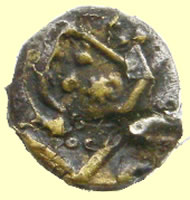 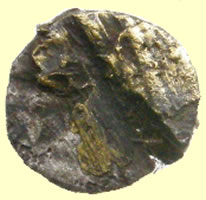 |
|||||||||||||
The smallest ancient gold coin I have ever seen dug - Size of a Saxon sceat with Celtic gold type markings - checking the ref books as I have never seen a gold like this before 0.42g, 7.85mm |
|||||||||||||
11,000 BC Stone Age axe |
|||||||||||||
  |
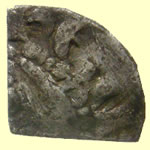 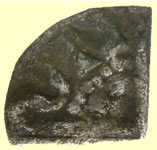 |
||||||||||||
Anglo Irish 1279 Edward 1st hammered silver penny- CIVI/TAS type Needs straightening to fully ID |
1247 Henry III hammered silver voided long cross qtr penny | ||||||||||||
 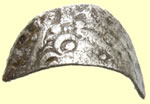 |
 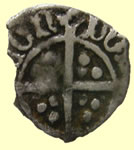 |
||||||||||||
| 1247 Henry III hammered silver voided long cross half penny | 1485 Henry VII hammered silver halfpenny - Single Arched crown- Cross ends fourchee Obv hENRIC DI GRA REX Rev CIVI/TAS/LON/DON -London mint |
||||||||||||
 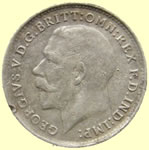 |
  |
||||||||||||
| 1914 George V milled silver 3 pence | 1594-6 Elizabeth 1st hammered silver half penny - Tun mint mark | ||||||||||||
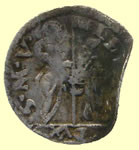 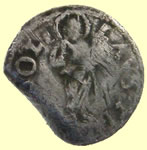 |
 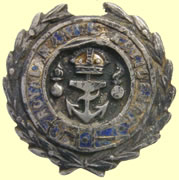 |
||||||||||||
(1501-1521). Rev: LAVS TIBI SOLI (Thee Alone be Praised). Haloed figure of Christ holding a cross. Obv: LE LAV DVX S M V (Leonardo Lauredan, Doge. St Mark of Venice.) Doge kneeling before Saint Mark. |
Solid silver - Royal Navy artillery badge The Royal Naval Artillery Reserve or Volunteers as they were initially known, were established in 1873 and were recruited from either keen amateur sailors or those who were in the merchant service. |
||||||||||||
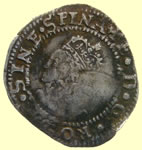 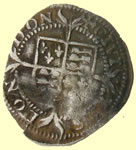 |
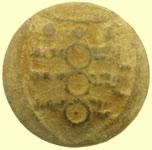 |
 |
|||||||||||
| 1560-1 Elizabeth 1st hammered silver penny | 18thC Royal artillery button | 19thC Army button | |||||||||||
 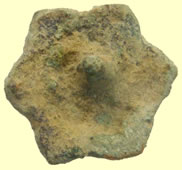 |
 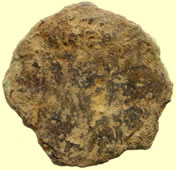 |
||||||||||||
A Late Medieval/ Early Post-Medieval (15th-early 16th century) cast one-piece copper-alloy mount, convex and cinquefoil in shape |
134 AD Hadrian Roman bronze coin | ||||||||||||
 |
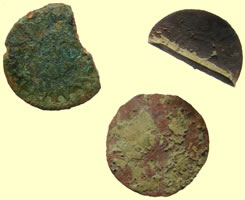 |
||||||||||||
| Rough Roman bronze 'grots' | Rough 17thC trade farthings | ||||||||||||
 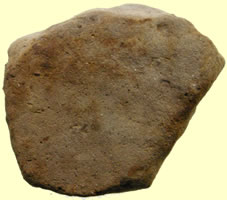 |
|||||||||||||
| Roman decorated pot shard | |||||||||||||
 |
 |
|
|||||||||||
| 1550-1650 buckle | 18thC Royal artillery button | 18thC bayonet frog | |||||||||||
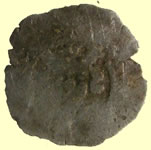 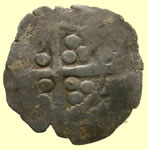 |
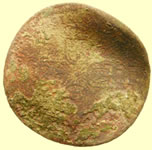 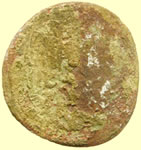 |
||||||||||||
| 1279 Edward 1st hammered silver farthing | 1696 William III milled silver sixpence forgery | ||||||||||||
|
|||||||||||||
| 16th C lead ampullae - no handles or decorations | |||||||||||||
 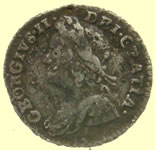 |
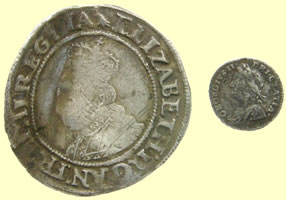 |
||||||||||||
| 1743 George II hammered silver penny | Little and large of coins comparison - Elizabeth 1st shilling next to George II penny | ||||||||||||
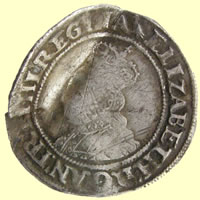 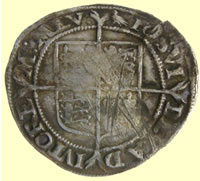 |
|||||||||||||
| 1560-1 Elizabeth 1st hammered silver shilling - Martlett mint mark | |||||||||||||
1.08g,11.96mm |
|||||||||||||
Saxon silver sceat - Circa 600-775 AD - cooking it to remove crust - partially cooked now and sent off to the Fitzwilliam museum for recording |
|||||||||||||
|
|||||||||||||
| Huge 4thC Roman cruciform brooch | |||||||||||||
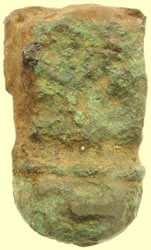  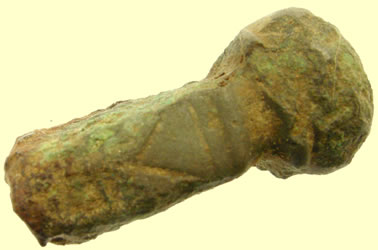 |
|||||||||||||
| Roman decorated dagger pommel | |||||||||||||
  |
  |
||||||||||||
| 2ndC Roman silver coin - cooking it to remove crust | A copper-alloy mount of post-medieval (probably 17th century) date. The object is asymmetrical and irregular in shape. | ||||||||||||
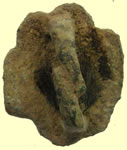 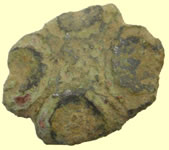 |
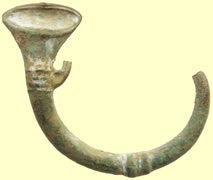 |
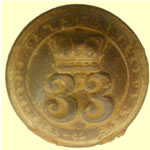 |
|||||||||||
| Post Medieval quatrefoil mount with red enamelling remaining | Huge Rifle regiment badge Model 1815 British Army Infantry insignia |
THE 33RD REGIMENT OF FOOT. / After 1881 :- 1st Battalion The Duke Of Wellington's (West Riding) Regiment Officer - 1848-1853 |
|||||||||||
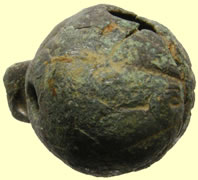 |
 |
  |
|||||||||||
| 17thC crotal bell | Georgian fob seal top and watch winder | 1215 Henry III hammered silver half penny | |||||||||||
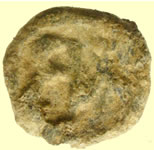 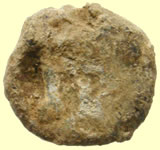 |
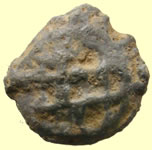 |
 |
|||||||||||
| 17thC lead token | 15thC lead token | 19thC mourning ring | |||||||||||
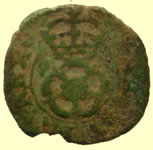 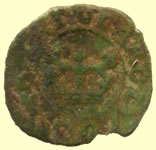 |
  |
||||||||||||
| 1634 Charles 1st hammered copper rose farthing | 1819 George III milled silver sixpence | ||||||||||||
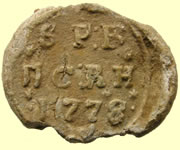 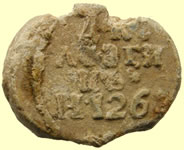 |
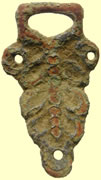 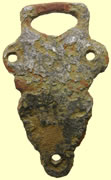 |
||||||||||||
| 1778 Russian lead bale seal - St Petersburg | 17thC clothing fastener | ||||||||||||
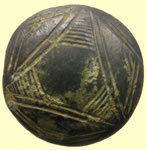 |
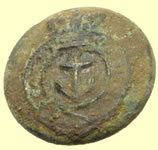 |
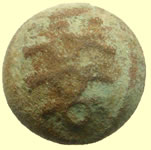 |
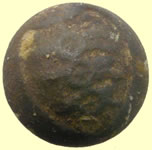 |
||||||||||
| Georgian button | Navy button H.M. Coast Guard |
18thC Royal artillery buttons | |||||||||||
 |
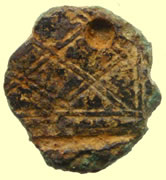 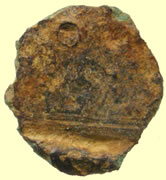 |
||||||||||||
| Britain - Canada Merchant Navy Private Purchase - 1774-1812 |
C7thC Saxon pendant made from a Roman bronze coin | ||||||||||||
  |
|||||||||||||
Can Dan cleaned up one of his crusty copper coins to reveal a neat Condor token 1794 ½ Penny Token (D & H 26 - Suffolk, Bury)
|
|||||||||||||
 |
|||||||||||||
